Reviews
The Eco-Friendly Solution: A Guide to Compost Toilets

I’ve always been fascinated by the idea of living more sustainably, so when I discovered compost toilets, I couldn’t help but be intrigued.
These eco-friendly alternatives to traditional toilets offer a unique solution to our waste management problem. By harnessing the power of aerobic organisms, they transform human waste into safe and usable compost.
It’s a process that not only eliminates the need for water but also reduces wastage.
In this guide, we’ll explore how compost toilets work, their functionality, and the environmental benefits they bring.
Key Takeaways
- Compost toilets are a waterless and eco-friendly alternative to traditional toilets.
- They use aerobic organisms to convert human waste into safe and usable compost.
- Compost from these toilets can be used for landscaping and feeding plants.
- Factors such as toilet design, number of users, waste volume, and the balance of elements affect the decomposition time of compost toilets.
How Compost Toilets Work
Compost toilets work by utilizing aerobic organisms to convert human waste into safe and usable compost. They offer several advantages over traditional flush toilets.
Firstly, compost toilets are waterless, which means they conserve water and reduce the strain on water resources. Additionally, they are environmentally friendly as they eliminate the need for harmful chemicals and reduce sewage pollution.
Maintenance and care for compost toilets are relatively simple. Regularly adding a carbon-rich material, such as sawdust or wood chips, helps maintain the balance of carbon and nitrogen in the composting chamber. It is also important to ensure proper ventilation to promote aerobic decomposition.
Emptying the composting chamber when it is full and allowing the compost to mature for a few months before use is crucial.
Overall, compost toilets are a sustainable and efficient solution for waste management.
Elements and Functionality of Composting Toilets
The ventilation unit in a composting toilet enhances the degradation process and eliminates malodorous gases. It plays a crucial role in maintaining the proper conditions for decomposition to occur effectively.
The composting chamber design is an important aspect of compost toilets. It provides a suitable environment for the breakdown of waste materials. The chamber is typically filled with carbon materials, such as sawdust or peat moss, which help to enhance aerobic activities.
Additionally, urine separation is a key benefit of compost toilets. By keeping urine separate from solid waste, the composting process is optimized. Urine contains high levels of nitrogen, which can be converted into a nitrogen-rich liquid fertilizer. This separation reduces odor and helps to maintain a healthier composting environment.
Overall, the ventilation unit and composting chamber design, along with urine separation, are essential elements that contribute to the functionality and effectiveness of compost toilets.
Factors Affecting Decomposition Time
I’ve noticed that the speed of the decomposition process in composting toilets can be influenced by various factors. One of the main factors is the type of composting toilet being used. Different types of composting toilets have varying decomposition rates.
For example, electric composting toilets generally work faster than non-electric ones. Additionally, the number of users and the volume of waste also affect the decomposition speed. More users and larger volumes of waste require a longer decomposition time.
Moreover, the balance of oxygen, moisture, aerobic material, and temperature in the composting chamber plays a crucial role in the decomposition process. Manufacturers use different methods to ensure the presence of these elements, such as manual agitators or natural ventilation mechanisms.
Understanding these factors can help optimize the composting speed in composting toilets.
Environmental Benefits of Composting Toilets
Using a composting toilet helps conserve water and reduces environmental impact. Composting toilets offer several environmental benefits that make them a sustainable and eco-friendly waste management option.
-
Water Conservation: Composting toilets eliminate the need for water, as they do not require flushing. This helps to conserve water resources, especially in areas facing water scarcity or where water is limited.
-
Reduction of Wastewater: Conventional toilets contribute to wastewater pollution through sewage systems. Composting toilets, on the other hand, do not produce wastewater, reducing the strain on sewage treatment plants and preventing pollution of water bodies.
-
Natural Nutrient Recycling: The waste from composting toilets can be converted into nutrient-rich compost. This compost can be used for gardening, landscaping, or agriculture, providing a sustainable and natural alternative to chemical fertilizers.
In terms of maintenance and regulations, composting toilets require regular maintenance to ensure proper functioning and hygiene. It is important to follow local regulations and guidelines for waste disposal and compost use to ensure compliance with environmental standards.
Overview of TOTO Toilets
As someone who values durability and high-quality products, TOTO toilets have always been my go-to choice for their innovative features and water efficiency. TOTO offers a wide range of toilet models, but one that stands out is the TOTO Neorest.
The Neorest is considered one of the smartest toilets available, equipped with advanced features such as automatic flushing, heated seats, and bidet functions. It uses innovative technology to provide a luxurious and comfortable bathroom experience.
Not only is the Neorest designed for comfort, but it is also eco-friendly. It incorporates water-saving features and operates in an energy-efficient manner. The TOTO Neorest has received positive reviews for its performance, durability, and user-friendly interface.
If you’re looking for a toilet that combines luxury and sustainability, the TOTO Neorest is an excellent choice.
Comparing Different Toilet Brands
After discussing the overview of TOTO toilets, let’s now shift our focus to comparing different toilet brands. This will provide a broader perspective on the available options in the market.
When considering sustainable and eco-friendly solutions, it is important to compare compost toilets to traditional flush toilets. Here are the pros and cons of compost toilets:
-
Pros of Compost Toilets:
- Environmentally friendly: Compost toilets eliminate the need for water, reducing water consumption and wastewater contamination.
- Nutrient-rich compost: The waste from compost toilets can be transformed into nutrient-rich compost that can be used for gardening and landscaping.
- Cost-effective: Compost toilets can save on water bills and wastewater treatment costs.
-
Cons of Compost Toilets:
- Space limitations: Compost toilets require additional space for the composting process, which may not be feasible in small bathrooms.
- Maintenance: Regular maintenance is required to ensure proper decomposition and prevent odor.
- Odor concerns: While compost toilets are designed to minimize odor, improper maintenance or ventilation can lead to unpleasant smells.
Frequently Asked Questions
Are Compost Toilets Legal and Approved for Use in All Areas?
Compost toilet regulations vary by area. Public perception is mixed, with some embracing the eco-friendly benefits while others may be hesitant. It is important to research local laws and consult with authorities for approval and proper use.
How Do Compost Toilets Handle Odor Control?
Compost toilets handle odor control through the composting process. The aerobic organisms in the composting chamber break down waste, eliminating odors. This eco-friendly solution reduces water usage and provides nutrient-rich compost for gardening, benefiting both the environment and users.
Can Compost Toilets Be Used in Cold Climates?
In cold climates, compost toilets can be used with proper insulation techniques. Insulation helps maintain the necessary temperature for the composting process. Various methods, such as adding insulation layers or using heat sources, can be employed to ensure efficient operation.
What Is the Maintenance Required for a Compost Toilet?
Maintaining a compost toilet is fairly simple. Regularly adding carbon-rich materials and ensuring a balance of oxygen, moisture, and temperature promotes the composting process. Emptying the compost chamber when full is also necessary for proper compost toilet construction.
How Does the Cost of a Compost Toilet Compare to a Traditional Flush Toilet?
Comparing costs, compost toilets are generally more expensive upfront than traditional flush toilets. However, they offer long-term savings on water bills. They have a positive environmental impact, require specific maintenance, and adhere to regulations and certifications. Odor control methods ensure a pleasant experience. Compost toilets are suitable for different climates and offer benefits for off-grid living. The composting process converts waste into usable compost for landscaping. Proper compost usage and disposal should be followed.
Conclusion
In conclusion, compost toilets are a revolutionary and eco-friendly solution for sustainable waste management. These toilets have an efficient decomposition process and eliminate the need for water usage, making them an excellent choice for environmentally conscious individuals.
Factors such as toilet design, waste volume, and user count affect the composting time, making it a customizable option. This allows users to tailor their composting experience to their specific needs and preferences.
The environmental benefits of compost toilets cannot be overstated. They significantly reduce water wastage, which is a critical resource in many parts of the world. Additionally, the compost produced by these toilets is nutrient-rich and can be used to fertilize plants, further contributing to sustainable agriculture.
When considering different toilet brands, TOTO stands out for its high-quality and innovative designs. They have a reputation for producing reliable and efficient compost toilets that meet the needs of environmentally conscious consumers.
Make the switch to compost toilets and join the movement for a greener future. By choosing this sustainable waste management solution, individuals can make a positive impact on the environment and contribute to a more sustainable and eco-friendly world.
Liam’s journey with us started as a consumer. Having faced challenges while setting up his own modern bathroom, he delved deep into research.
Recognizing his knack for simplifying complex information and his authentic writing style, we were thrilled to welcome him aboard. Liam’s articles often merge practicality with style, ensuring readers find the perfect fit for their homes. Liam is an avid hiker off-duty and often jokes about finding the best “natural toilets” Mother Earth has to offer.
Reviews
Can You Put Toilet Paper in the Toilet in Greece

We have all experienced that moment when we find ourselves in a foreign bathroom, unsure of how to dispose of used toilet paper.
In Greece, the answer might surprise you. Can you put toilet paper in the toilet? Well, it’s not as straightforward as you might think.
Our expert guide will enlighten you on the proper etiquette of toilet paper disposal in Greece. Get ready to master the dos and don’ts of this unique plumbing system.
Key Takeaways
- Greek toilets have separate bins for toilet paper due to plumbing infrastructure.
- Flushing toilet paper can cause blockages and expensive repairs in Greek plumbing systems.
- Dispose of toilet paper in separate bins provided next to the toilet in Greece.
- Consider sustainable alternatives like bidets or wet wipes for toilet paper disposal in Greece.
Greek Toilet Paper Disposal Etiquette
We can dispose of toilet paper in Greek toilets using the designated toilet paper bins. In Greece, toilet paper etiquette differs from what many people are accustomed to. Due to the country’s plumbing infrastructure, it’s common for Greek toilets to have bins specifically designated for toilet paper disposal. This practice is necessary to prevent clogging the pipes.
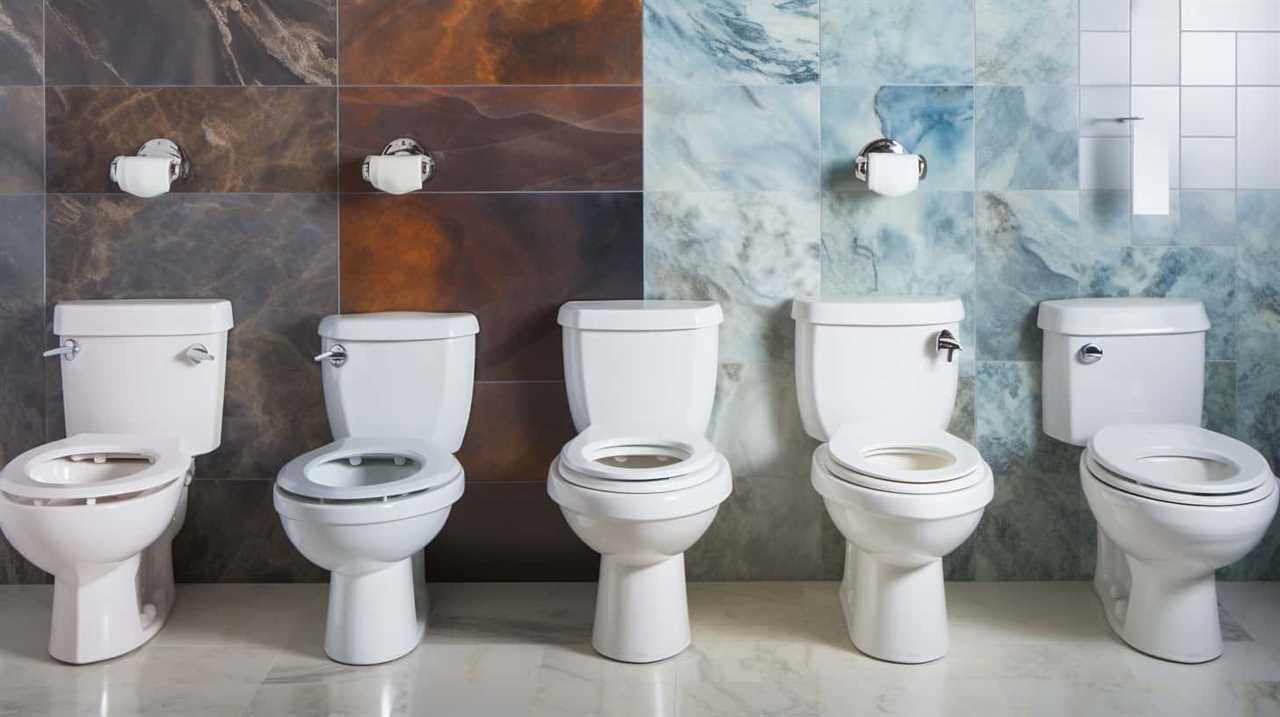
It’s important to understand and respect this cultural difference when using public restrooms or staying in accommodations in Greece. When finished using toilet paper, it should be placed in the provided bin rather than flushed down the toilet. Adhering to this toilet paper disposal etiquette not only maintains the plumbing system but also demonstrates cultural sensitivity and respect for local customs.
The Impact of Greek Plumbing System on Toilet Paper
Taking into account the unique plumbing infrastructure in Greece, the impact of the Greek plumbing system on toilet paper disposal is significant. Unlike in many other countries, Greek plumbing systems aren’t designed to handle toilet paper. Flushing toilet paper can cause blockages and clog the pipes, leading to expensive repairs.
This cultural difference can be challenging for tourists and expats who are accustomed to disposing of toilet paper in the toilet. As a result, it’s common practice in Greece to dispose of used toilet paper in a separate bin provided next to the toilet. While this may seem inconvenient, it’s important to understand that this practice helps to maintain the functionality of the plumbing system and prevent environmental damage.
Alternatives to Flushing Toilet Paper in Greece
To avoid plumbing issues, it’s advisable to dispose of toilet paper in a separate bin provided next to the toilet in Greece. While it may seem inconvenient, Greece’s plumbing system isn’t designed to handle toilet paper, which can cause blockages and backups.
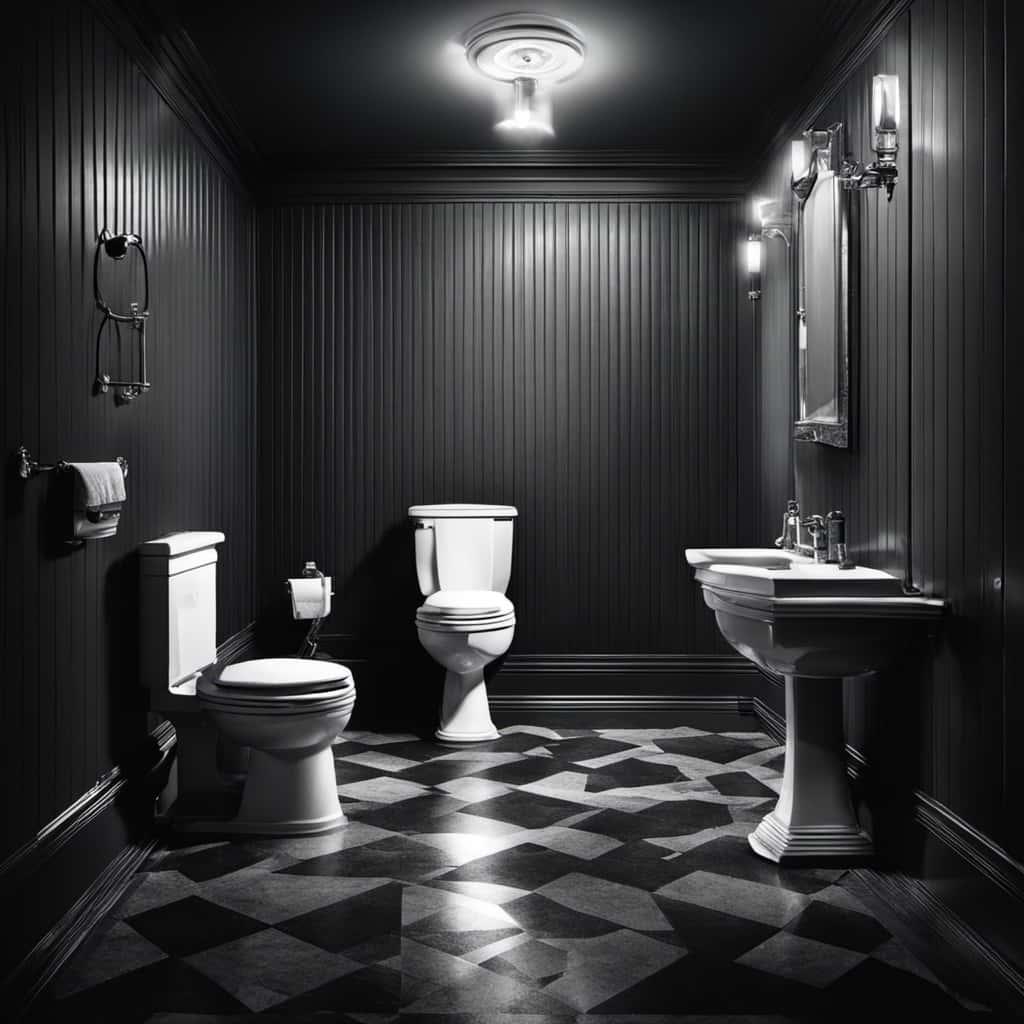
However, there are alternatives to flushing toilet paper that are both effective and environmentally friendly. One option is to use bidets or handheld sprayers, which eliminate the need for toilet paper altogether. Another alternative is to use flushable wipes that are specifically designed to break down in water.
These options not only prevent plumbing problems but also reduce the environmental impact of excessive toilet paper usage. By adopting these alternatives, we can ensure a smooth and sustainable waste disposal system in Greece.
Now let’s move on to discuss some tips for properly disposing of toilet paper in Greece.
Tips for Proper Toilet Paper Disposal in Greece
To ensure proper disposal of toilet paper in Greece, it’s important to follow a few simple guidelines.

While flushing toilet paper is generally acceptable in most countries, Greece has a different approach due to its older plumbing systems. Proper waste management is essential to avoid clogging the pipes and causing damage.
In Greece, it’s recommended to dispose of toilet paper in the waste bin provided in the bathroom. This practice helps maintain the plumbing system and prevents blockages.
Additionally, sustainable alternatives like bidets or wet wipes can be used as an alternative to toilet paper, reducing the amount of waste generated.
By following these guidelines, we can contribute to the proper disposal of toilet paper in Greece and promote sustainable practices.
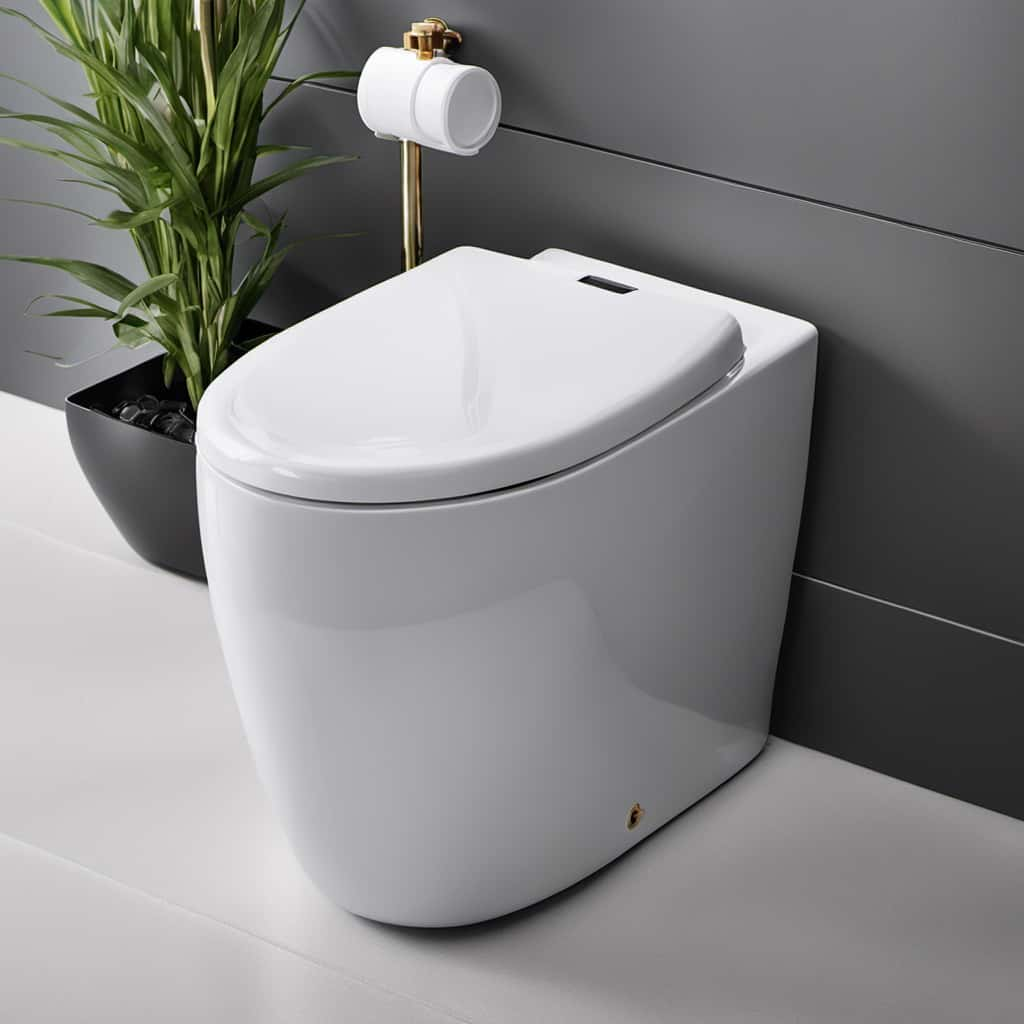
Now, let’s address some common misconceptions about toilet paper in Greece.
Common Misconceptions About Toilet Paper in Greece
There are several common misconceptions about the proper disposal of toilet paper in Greece. To clear up any confusion, here are four important points to understand:
- Toilet paper can be flushed in Greece: Contrary to popular belief, it’s generally acceptable to flush toilet paper in Greece. Most modern plumbing systems can handle it without any issues.
- Cultural differences exist: While it’s true that some older buildings or rural areas in Greece may have plumbing systems that aren’t designed to handle toilet paper, these instances are becoming less common. In most urban areas and tourist destinations, toilet paper can be disposed of in the toilet.
- Toilet paper alternatives: If you come across a restroom where toilet paper shouldn’t be flushed, you’ll usually find a bin next to the toilet for its disposal. In such cases, it’s advisable to use the provided toilet paper alternatives, such as bidets or wet wipes.
- Respect local customs: As a visitor, it’s important to respect local customs and follow any instructions provided. If unsure about the proper disposal method, it’s always best to ask for guidance or err on the side of caution.
Frequently Asked Questions
Is It True That Greek Plumbing Systems Cannot Handle Flushing Toilet Paper?
Greek plumbing challenges can make it difficult to flush toilet paper. In Greece, it is common to dispose of toilet paper in a separate bin. This helps avoid clogging the toilets and ensures proper functioning of the plumbing system.
What Are Some Alternatives to Flushing Toilet Paper in Greece?
Toilet paper alternatives in Greece include using bidets, wet wipes, or eco-friendly disposal methods like wrapping it up and disposing of it in a designated bin. These options ensure proper waste management and help protect the plumbing system.

Are There Any Tips for Proper Toilet Paper Disposal in Greece?
Tips for disposing of toilet paper in Greece include using the provided bins instead of flushing it down the toilet. Proper toilet paper disposal techniques in Greece help maintain the plumbing system and prevent clogs.
Can You Provide Some Information on Greek Toilet Paper Disposal Etiquette?
Greek toilet paper disposal etiquette involves not flushing toilet paper in most places. Instead, it should be placed in a waste bin provided. Alternatives to flushing toilet paper in Greece can include using bidets or wet wipes.
What Are Some Common Misconceptions About Toilet Paper in Greece?
Toilet paper recycling practices and cultural differences in bathroom habits are common misconceptions about toilet paper in Greece. Let us delve into the intricacies of this topic to provide you with expert insights.
Conclusion
In conclusion, when visiting Greece, it’s important to be aware of the proper toilet paper disposal etiquette.

The Greek plumbing system isn’t designed to handle toilet paper, so it shouldn’t be flushed. Instead, consider using alternatives like bidets or wet wipes, and always dispose of toilet paper in the provided bins.
Remember, ‘When in Greece, don’t let the toilet paper flow, in the bin it must go!’
With an impeccable eye for detail and a passion for bathroom-related, Ava leads our editorial team gracefully and precisely.
Under her guidance, Best Modern Toilet has flourished as the go-to resource for modern bathroom enthusiasts. In her free time, you might find Ava exploring antique shops and looking for vintage bathroom fixtures to add to her collection.
Reviews
Does It Cost Money to Flush the Toilet

As homeowners, we tend to overlook the basic action of flushing the toilet. But have you ever thought about the possible expenses linked to this daily chore?
In this article, we will explore the financial implications of flushing, from water usage and metering to sewer and wastewater treatment fees. We will also delve into the impact on home plumbing and the environment, providing valuable tips for reducing toilet flushing costs.
Join us as we dive into this often overlooked aspect of household expenses.
Key Takeaways
- Water usage is a significant factor in determining the cost of flushing toilets.
- Implementing water-saving measures, such as installing low-flow toilets and monitoring water usage, can lead to cost savings.
- Proper plumbing maintenance is crucial to avoid damage to plumbing fixtures caused by excessive water pressure from flushing.
- Conserving water through mindful flushing habits and using water-saving technologies helps reduce the strain on water resources and can lead to lower water bills.
Water Usage and Metering
Water usage is a significant factor in determining the cost of flushing toilets. When it comes to water conservation, it’s essential to understand how much water is being used and how it affects our expenses.
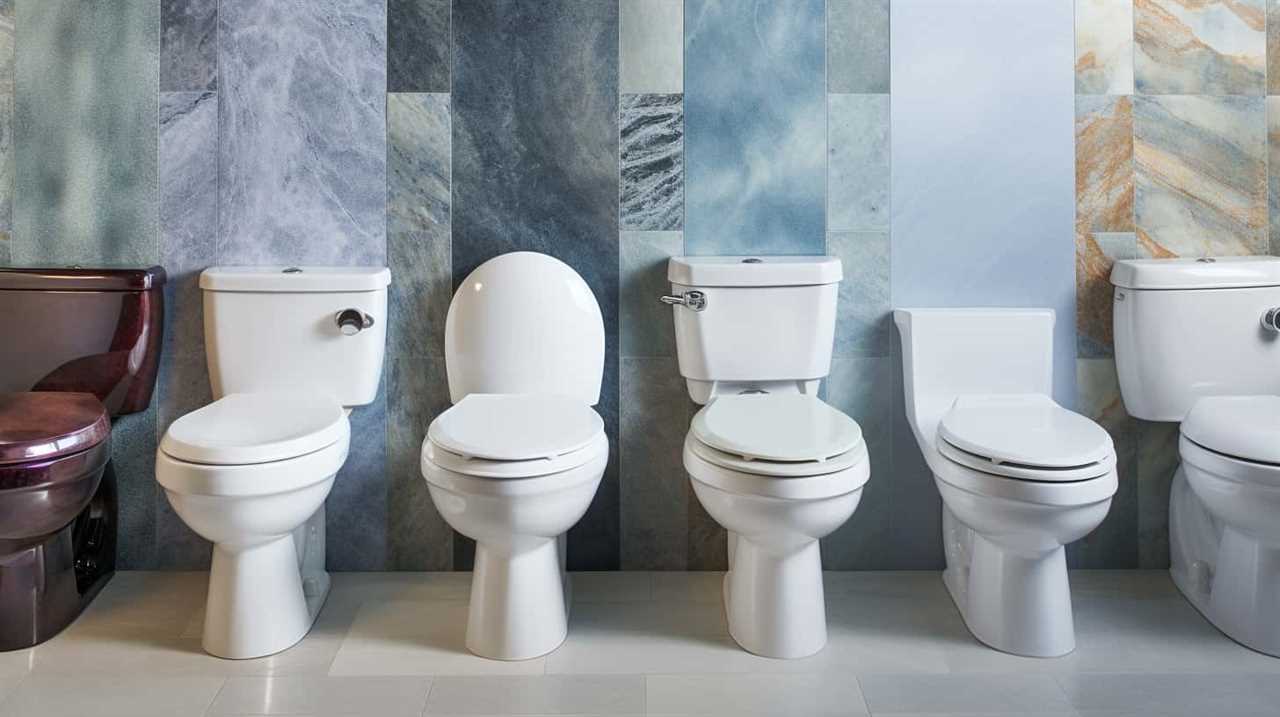
Many households and businesses are now adopting water-saving technologies to reduce their overall water consumption. These technologies, such as low-flow toilets and dual-flush systems, help minimize the amount of water needed for each flush. By implementing these advancements, we can contribute to both water conservation efforts and cost savings.
It’s important to monitor water usage through metering systems, allowing us to track consumption and make informed decisions about water-saving measures. By reducing water usage, we not only promote sustainability but also mitigate the impact on sewer and wastewater treatment fees, which we’ll explore in the next section.
Sewer and Wastewater Treatment Fees
As we continue our discussion on water conservation and cost savings, it’s important to address the topic of sewer and wastewater treatment fees.
When it comes to managing wastewater, there are two main options: septic systems and municipal water rates. Septic systems are self-contained units that treat and dispose of wastewater on-site. They require regular maintenance, such as pumping and inspections, to function properly.
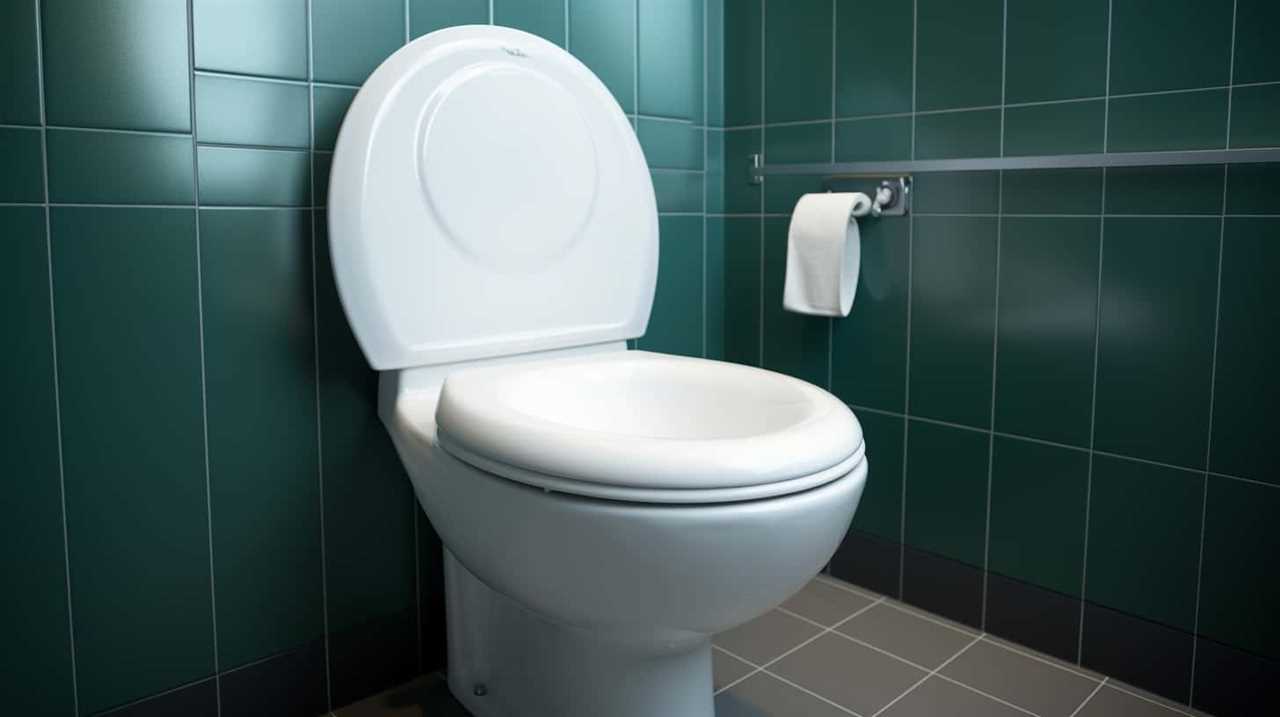
On the other hand, municipalities provide centralized wastewater treatment services, where wastewater from multiple households is collected and treated at a treatment plant. To cover the costs of operating and maintaining these treatment facilities, municipalities charge sewer and wastewater treatment fees to their customers. These fees can vary depending on factors such as the amount of water used, the size of the property, and the local regulations.
It’s important for consumers to understand these fees and their impact on their overall water bills.
Impact of Flushing on Home Plumbing
When it comes to our home plumbing, flushing the toilet can have a significant impact on its functionality and maintenance. Proper plumbing maintenance is crucial to ensure the smooth operation of our plumbing systems.
Flushing the toilet affects the water pressure within our home plumbing. The force of water released during flushing can cause stress on the pipes, joints, and fittings. This stress can lead to leaks, bursts, or other forms of damage.

Additionally, excessive water pressure from flushing can cause issues with other plumbing fixtures, such as faucets and showerheads. It’s important to maintain a balance between sufficient water pressure for a thorough flush and avoiding excessive pressure that can damage the plumbing system.
Regular inspections and maintenance by a professional plumber can help identify and address any potential issues related to flushing and water pressure, ensuring the longevity and efficiency of our home plumbing system.
Environmental Costs and Conservation Efforts
Continuing our discussion on the impact of flushing on home plumbing, we need to address the environmental costs and conservation efforts associated with this everyday activity.
Flushing toilets not only consumes water but also contributes to water scarcity, a growing concern in many regions. With water scarcity, it’s crucial to implement water conservation efforts to reduce our overall water consumption.
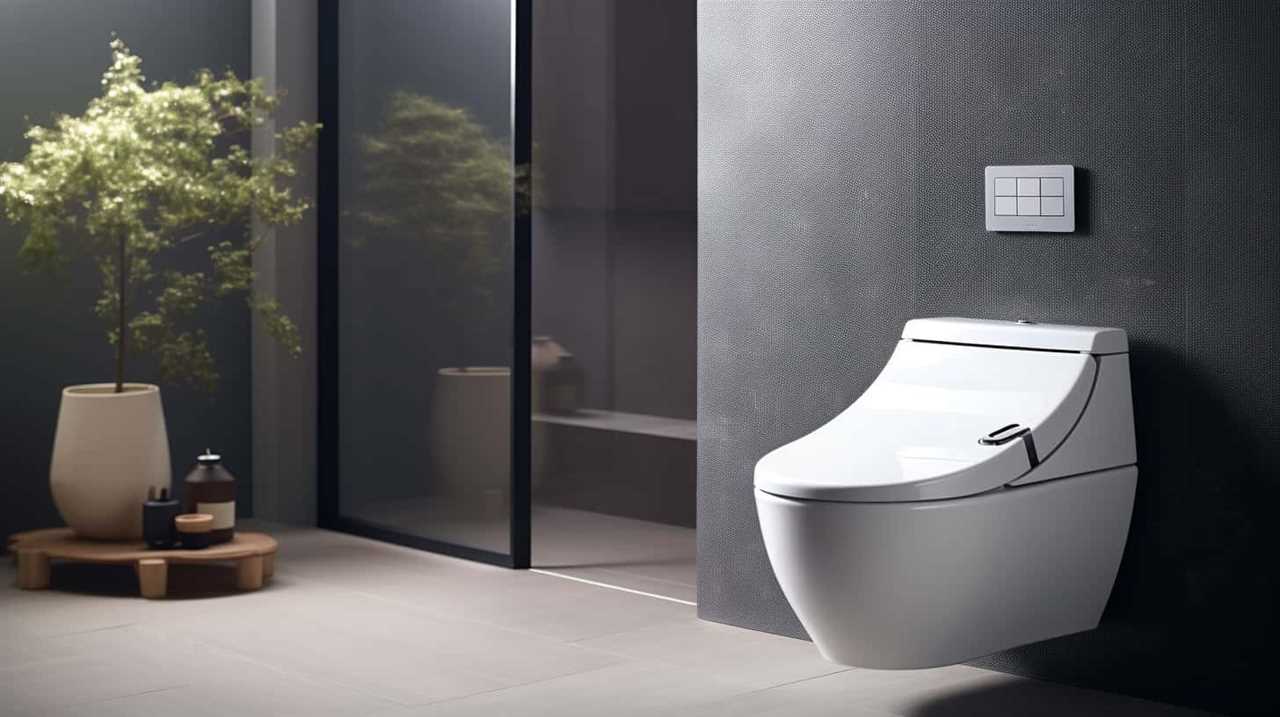
One way to achieve this is by installing low-flow toilets that use less water per flush. These toilets are designed to effectively remove waste while using smaller amounts of water.
Additionally, practicing mindful flushing habits can greatly contribute to water conservation. Avoiding unnecessary flushes, such as using the toilet as a trash can, can help conserve water and reduce the strain on our water resources.
Tips for Reducing Toilet Flushing Costs
To further reduce our environmental impact and save on water bills, let’s explore some practical tips for cutting toilet flushing costs. Here are some water-saving techniques and cost-effective plumbing upgrades that can help us achieve these goals:
- Install a dual-flush toilet: These toilets have two buttons or handles, allowing you to choose between a full flush for solid waste and a partial flush for liquid waste. This can significantly reduce water usage.
- Adjust the fill valve: Ensure that the fill valve is set at the correct level to prevent excess water from being used during each flush. This can be done by adjusting the float arm or adjusting the valve itself.
- Use a toilet dam or displacement bag: Placing a toilet dam or a displacement bag filled with water in the toilet tank can reduce the amount of water used per flush.
- Fix leaks promptly: Leaky toilets can waste a significant amount of water. Regularly check for leaks and repair them immediately to avoid unnecessary water consumption.
Frequently Asked Questions
Is There a Difference in Water Usage Between a Regular Flush and a Dual Flush Toilet?
There is a difference in water usage between a regular flush and a dual flush toilet. Dual flush toilets are more water efficient, offering a cost-effective option for reducing water consumption in the long run.
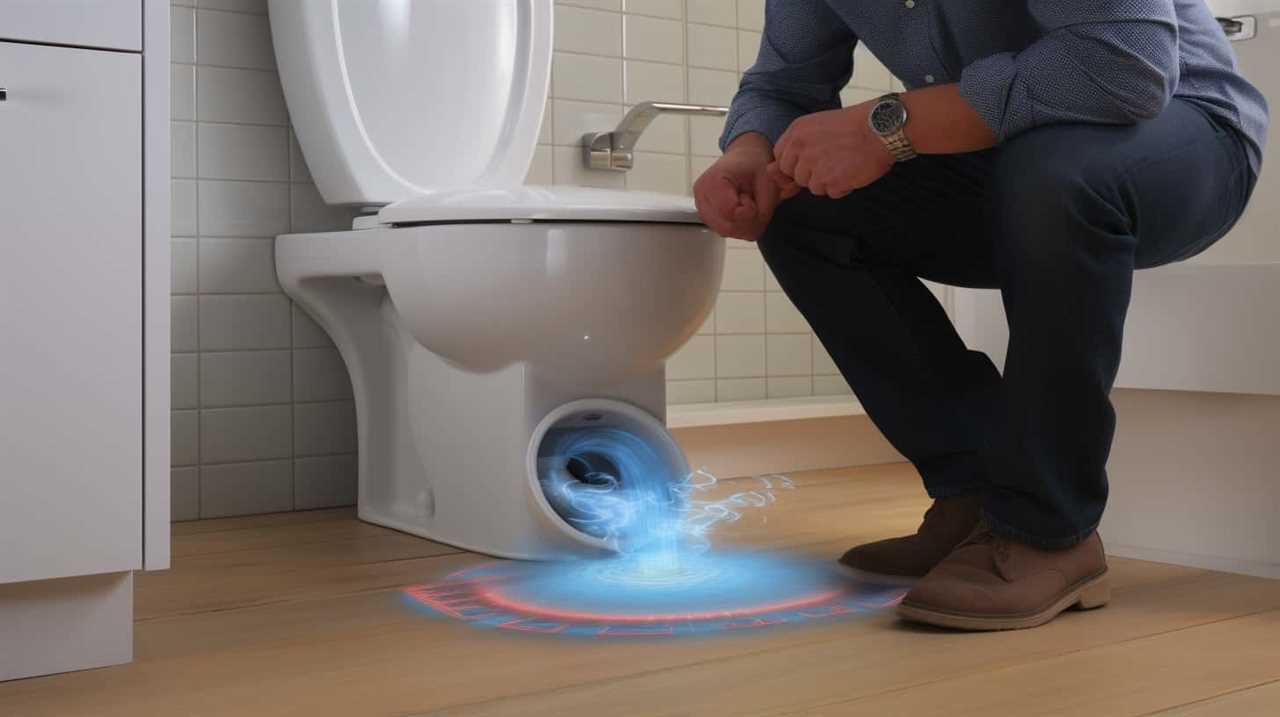
How Are Sewer and Wastewater Treatment Fees Calculated by Municipal Authorities?
Calculating fees for sewer and wastewater treatment is a complex process. Municipal authorities use various billing methods, including assessing based on water usage, property size, or a combination of factors. It’s important to understand how these calculations are made to manage costs effectively.
What Are the Potential Consequences of Flushing Inappropriate Items Down the Toilet?
Flushing inappropriate items down the toilet can have potential health risks and impact sewage systems. It is important to understand the consequences of such actions to avoid costly damage and maintain proper sanitation.
Are There Any Long-Term Effects on Home Plumbing Systems From Excessive Flushing?
Long-term maintenance of home plumbing systems can be affected by excessive flushing. Conserving water is crucial to prevent future issues. It’s important to consider the potential consequences and take measures to ensure proper functioning.
How Do Conservation Efforts Contribute to Reducing the Environmental Costs of Toilet Flushing?
Conservation methods and water-saving technologies help reduce the environmental costs of toilet flushing. By implementing efficient flushing systems and using less water per flush, we can minimize water waste and promote sustainability.
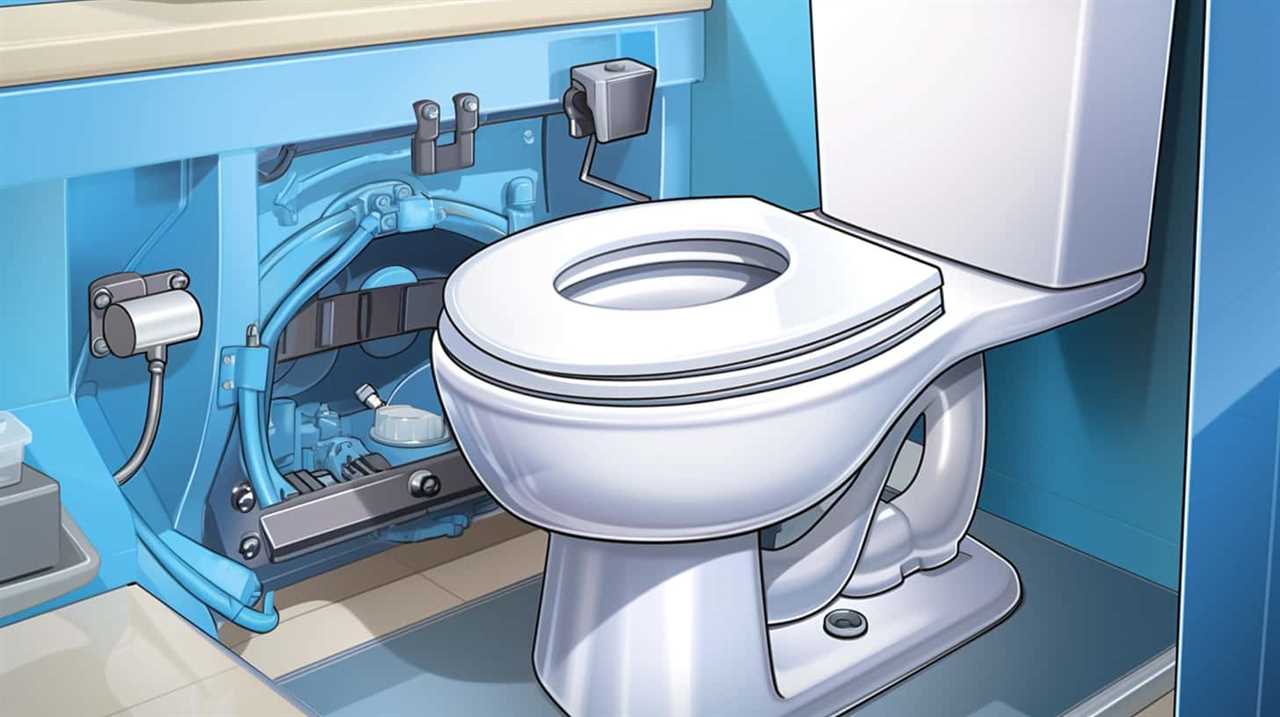
Conclusion
In conclusion, while it does cost money to flush the toilet due to water usage and potential sewer and wastewater treatment fees, the impact on home plumbing and the environment should also be considered.
By implementing conservation efforts and reducing unnecessary flushing, we can’t only save money but also contribute to a more sustainable future.
So, next time you reach for that flush handle, ask yourself, ‘Can I make a small change to make a big difference?’
‘Can I make a small change to make a big difference in conserving water and protecting the environment?’
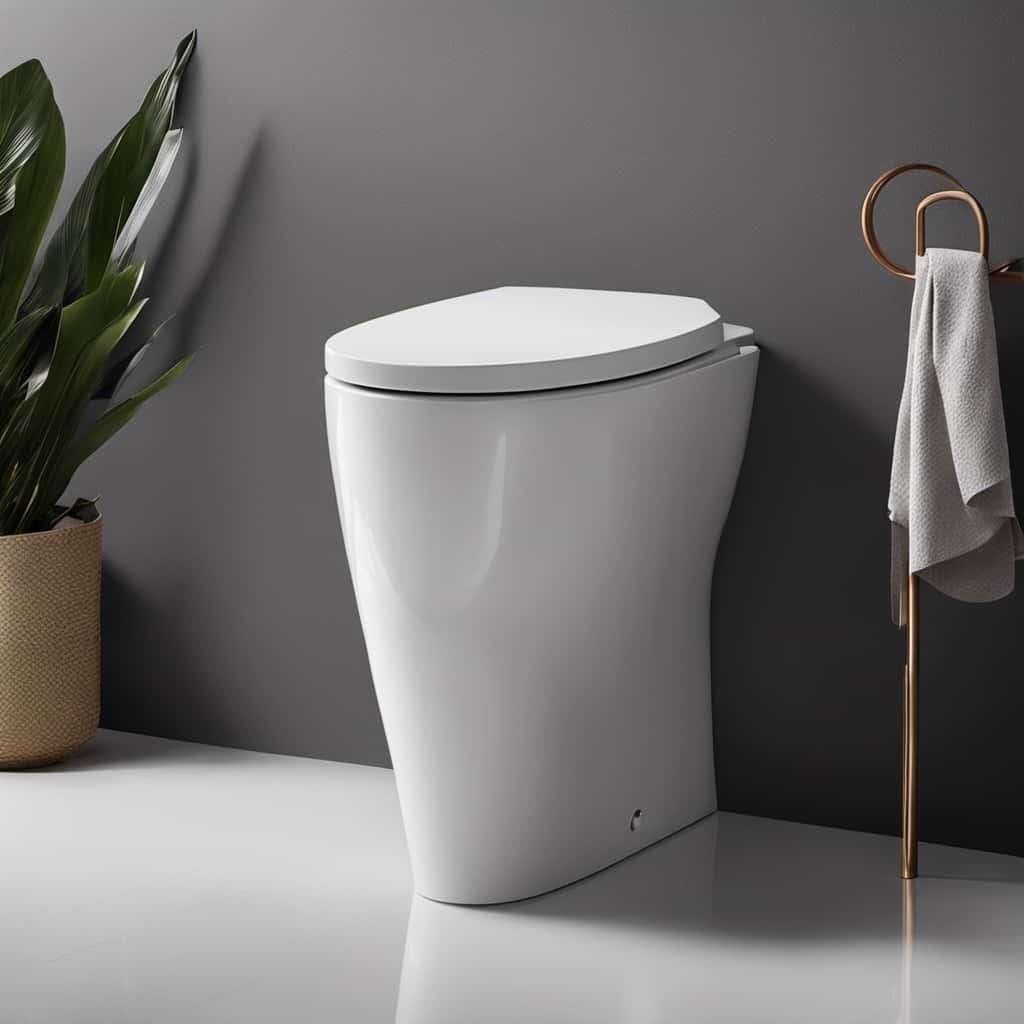
With an impeccable eye for detail and a passion for bathroom-related, Ava leads our editorial team gracefully and precisely.
Under her guidance, Best Modern Toilet has flourished as the go-to resource for modern bathroom enthusiasts. In her free time, you might find Ava exploring antique shops and looking for vintage bathroom fixtures to add to her collection.
Reviews
What Foods Should You Avoid in El Salvador

Are you aware that El Salvador is renowned for its distinctive and delicious cuisine?
However, when it comes to enjoying the local flavors, it’s important to be mindful of what we consume.
In this article, we will explore the foods that we should avoid in El Salvador to ensure a safe and enjoyable culinary experience.
From street foods to raw seafood, unpasteurized dairy products to undercooked meat, and even tap water, let’s delve into the details of what to steer clear of during our gastronomic adventures in El Salvador.

Key Takeaways
- Exercise caution when consuming street food and choose reputable vendors who prioritize cleanliness and food safety.
- Avoid consuming raw seafood, such as ceviche and tiradito, to minimize the risk of bacterial contamination and parasitic infestations.
- Opt for pasteurized dairy products to ensure safety and avoid the consumption of unpasteurized dairy that may contain harmful bacteria.
- Cook meat thoroughly to eliminate pathogens like Salmonella and E. coli, following proper cooking temperatures for ground meat and whole cuts.
Street Foods
One of the street foods we should avoid in El Salvador is the number of unidentified meat vendors. While street food can be a delicious and affordable way to experience local cuisine, it’s important to prioritize hygiene practices when choosing where to eat.
In El Salvador, the lack of regulation and oversight on street food vendors makes it difficult to ensure proper food handling and hygiene. This can lead to an increased risk of foodborne illnesses and contamination.
However, it isn’t to say that all street foods should be avoided. There are many popular street food dishes in El Salvador that are safe and delicious to try, such as pupusas, yuca frita, and elote loco.
It’s crucial to exercise caution and choose reputable vendors who prioritize cleanliness and food safety.

Raw Seafood
When it comes to street foods in El Salvador, it is important to be cautious about consuming raw seafood. While El Salvador offers a variety of delicious local delicacies, raw seafood can pose certain risks if not handled and prepared properly. Raw seafood dishes such as ceviche, tiradito, and sushi are popular choices among locals and tourists alike. However, it is essential to ensure that the seafood used in these dishes is fresh and sourced from reputable suppliers. Consumption of contaminated or improperly handled raw seafood can lead to foodborne illnesses such as bacterial infections or parasitic infestations. Therefore, it is advisable to exercise caution and choose cooked seafood options when enjoying the vibrant street food scene in El Salvador.
| Raw Seafood Dishes | Risks |
|---|---|
| Ceviche | Potential bacterial contamination |
| Tiradito | Risk of parasitic infestations |
| Sushi | Concerns with fish quality and hygiene |
Table: Risks associated with consuming raw seafood dishes in El Salvador.
Unpasteurized Dairy Products
Moving on to another potential food safety concern in El Salvador, we should be cautious when it comes to consuming unpasteurized dairy products. Pasteurization is a process that involves heating milk or other dairy products to kill harmful bacteria, such as Salmonella, E. coli, and Listeria. It’s an important step in ensuring the safety of dairy products and protecting our health.
Consuming unpasteurized dairy products can pose serious health risks, including foodborne illnesses. These products may contain harmful bacteria that can cause diarrhea, vomiting, abdominal pain, and in severe cases, even hospitalization. It’s crucial to choose pasteurized dairy products to reduce the risk of foodborne illnesses and ensure the safety of our meals.

Now, let’s move on to the next food safety concern: undercooked meat.
Undercooked Meat
To continue addressing potential food safety concerns in El Salvador, we must be aware of the risks associated with consuming undercooked meat. Proper cooking temperatures are crucial for eliminating harmful bacteria and ensuring that the meat is safe to eat. Undercooked meat can harbor pathogens such as Salmonella, E. coli, and Campylobacter, which can cause severe foodborne illnesses.
It’s important to cook meat to the recommended internal temperature to kill these bacteria and prevent food poisoning. For example, ground meat should be cooked to an internal temperature of 160°F (71°C), while whole cuts of meat like steaks and roasts should reach an internal temperature of 145°F (63°C). By following these cooking guidelines, we can minimize the risk of foodborne illnesses associated with undercooked meat.
Now, let’s turn our attention to another important aspect of food safety: tap water.

Tap Water
Tap water in El Salvador can pose significant health risks if consumed without proper treatment. The water supply in the country isn’t reliably safe for consumption, as it may be contaminated with bacteria, parasites, and other harmful pollutants.
To ensure your safety, it’s recommended to avoid drinking tap water altogether. Instead, opt for bottled water or other commercially sealed beverages. When traveling, it’s also advisable to use bottled water for brushing your teeth and avoid using tap water in drinking fountains.
Frequently Asked Questions
Is It Safe to Eat Street Foods in El Salvador?
Yes, it is safe to eat street foods in El Salvador. Street food hygiene is a priority, and popular local street food dishes like pupusas and ceviche are delicious and enjoyed by locals and tourists alike.
Can I Consume Raw Seafood in El Salvador?
We avoid consuming raw seafood in El Salvador due to safety concerns. However, cooked seafood offers numerous health benefits such as being a good source of protein and omega-3 fatty acids.

Are Unpasteurized Dairy Products Widely Available in El Salvador?
Unpasteurized dairy products can pose risks in El Salvador. It’s important to be aware of dairy product safety measures. In our experience, we recommend avoiding unpasteurized dairy to ensure food safety and prevent potential health issues.
How Common Is Undercooked Meat in El Salvador?
Undercooked meat is a common cause of foodborne illnesses in El Salvador. It poses health risks such as bacterial infections and parasites. It is important to ensure that meat is cooked thoroughly to avoid these risks.
Is It Safe to Drink Tap Water in El Salvador?
Is bottled water necessary in El Salvador? What are the alternatives to tap water? In our experience, tap water in El Salvador is not safe to drink. We recommend sticking to bottled water or using water filters.
Conclusion
In a country like El Salvador, where culinary delights abound, it’s important to tread carefully when it comes to food choices.

Avoid the tempting allure of street foods, as they may not meet proper hygiene standards.
Stay away from raw seafood, as it can harbor harmful bacteria.
Say no to unpasteurized dairy products and undercooked meat, which can lead to unpleasant tummy troubles.
And lastly, quench your thirst with bottled water instead of tap water, for a safe and enjoyable gastronomic adventure.
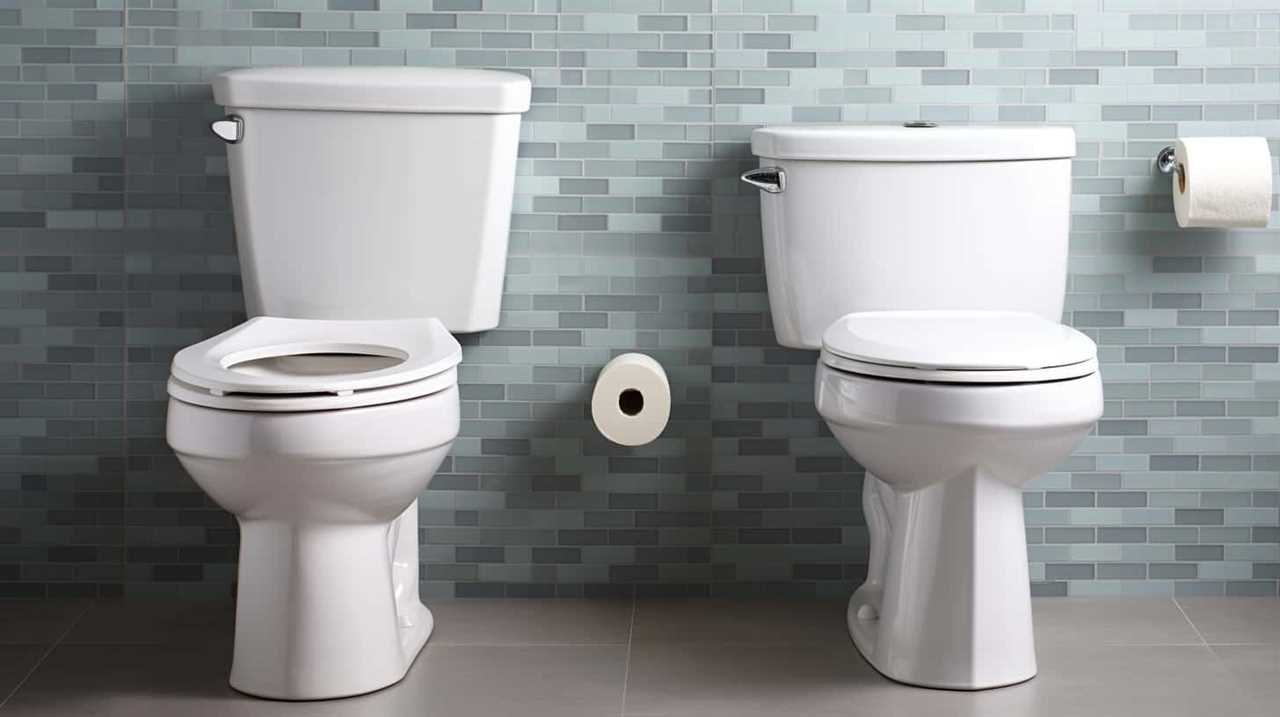
Remember, in El Salvador’s culinary landscape, it’s better to be safe than sorry.
With an impeccable eye for detail and a passion for bathroom-related, Ava leads our editorial team gracefully and precisely.
Under her guidance, Best Modern Toilet has flourished as the go-to resource for modern bathroom enthusiasts. In her free time, you might find Ava exploring antique shops and looking for vintage bathroom fixtures to add to her collection.
-

 Guides3 months ago
Guides3 months agoThe Rise of Smart Toilet Apps: Tracking Health and Habits on Your Smartphone
-

 Guides3 months ago
Guides3 months agoThe Future of Bathroom Cleaning: How Smart Toilets Are Making Chores Obsolete
-

 Guides3 months ago
Guides3 months agoSmart Toilets in Healthcare: Improving Patient Care and Monitoring
-

 Guides3 months ago
Guides3 months agoComposting Smart Toilets: High-Tech Solutions for Eco-Conscious Homeowners
-

 Guides3 months ago
Guides3 months agoDIY Smart Toilet Upgrades: Adding Tech Features to Your Existing Toilet
-

 Guides3 months ago
Guides3 months agoSmart Toilets in Hotels: Enhancing the Guest Experience
-

 Guides3 months ago
Guides3 months agoThe Debate Over Smart Toilet Data Collection: Privacy Vs. Health Benefits
-

 Guides3 months ago
Guides3 months agoCultural Differences in Smart Toilet Adoption: A Global Perspective









